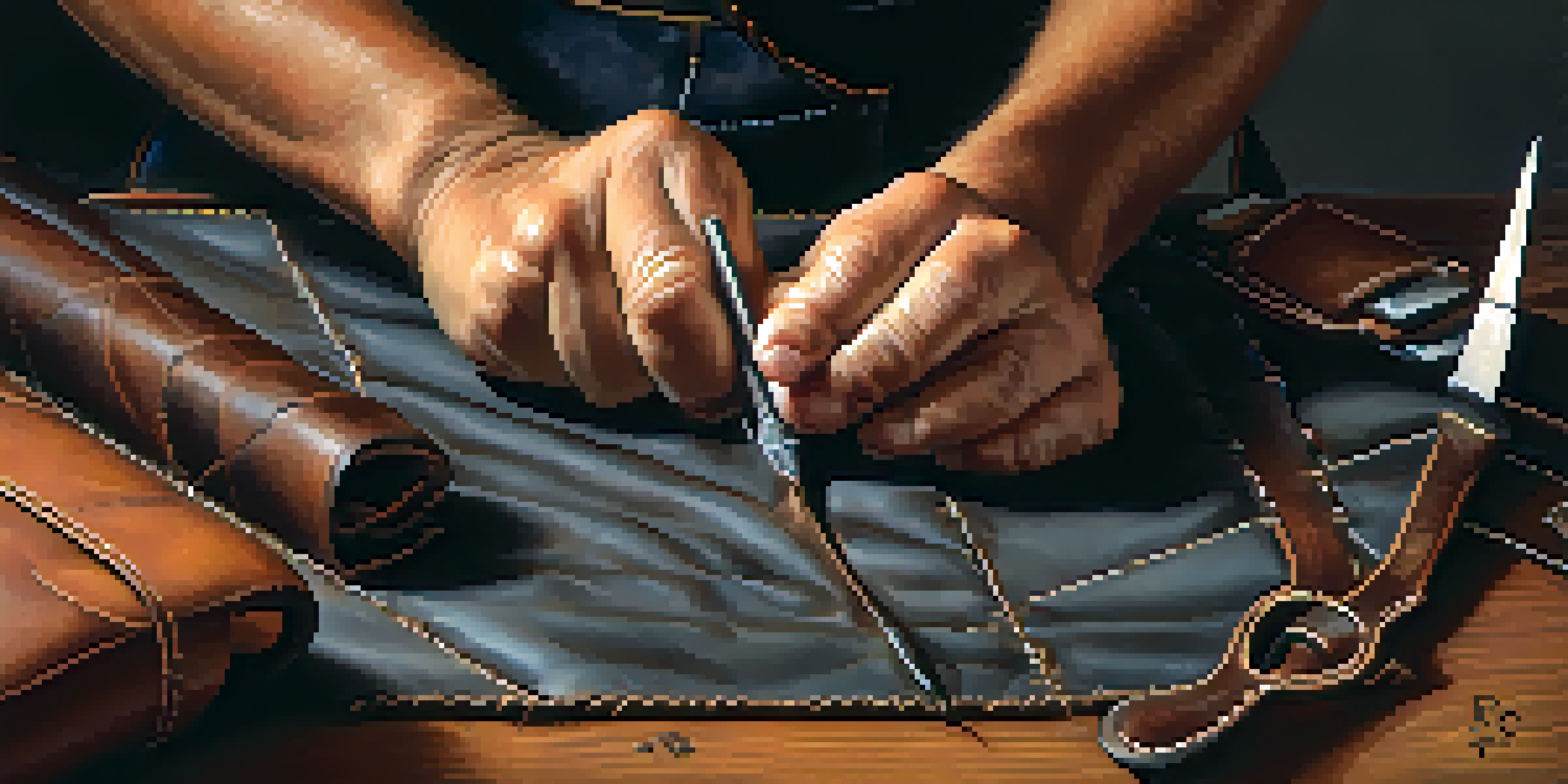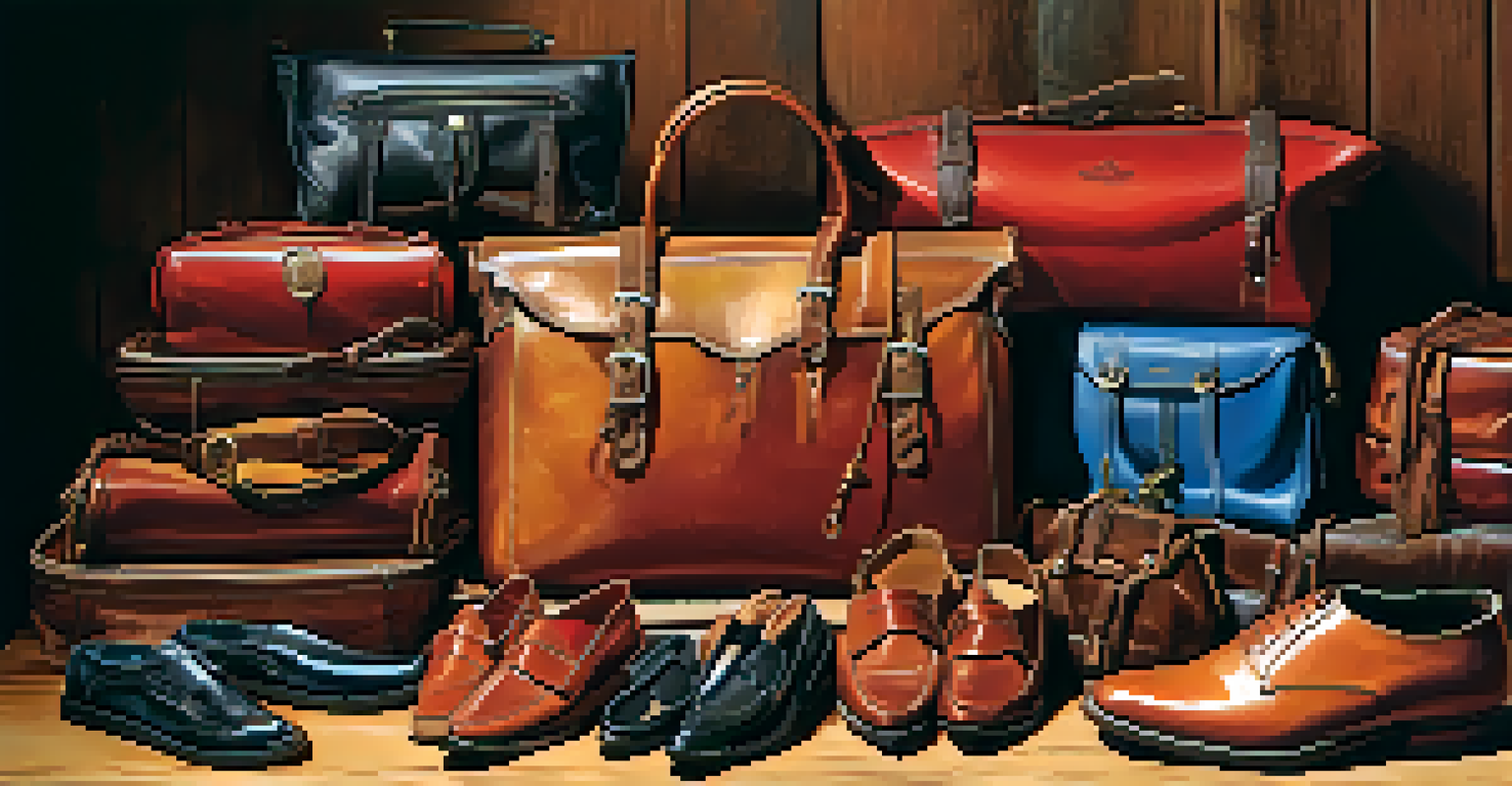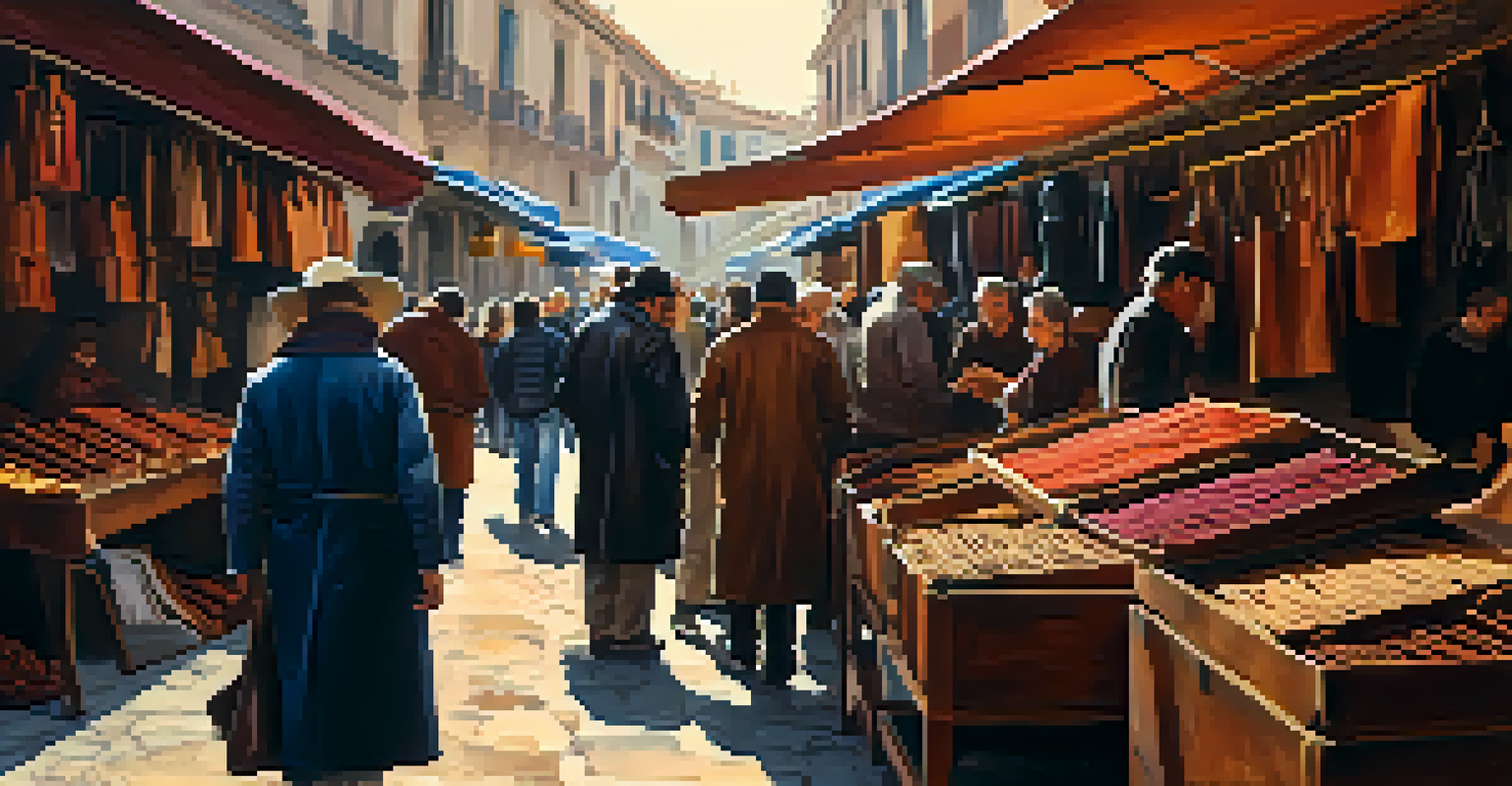The Timeless Craft of Spanish Leatherwork: A Heritage Preserved

A Glimpse into the History of Spanish Leatherwork
Spanish leatherwork boasts a history that dates back centuries, intertwining with the cultural fabric of the nation. This craftsmanship has been influenced by various civilizations, including the Moors, who introduced intricate designs and techniques. The result is a unique blend of styles that reflect Spain's diverse heritage and artistry.
Craftsmanship is the art of making things that are both beautiful and functional.
One of the oldest leatherworking centers is in Córdoba, where artisans have perfected their skills over generations. Here, the tradition of producing high-quality leather items such as bags, shoes, and belts thrives. This city not only represents a pivotal point in leather history but also serves as a pilgrimage for leather enthusiasts from all over the world.
As we explore the evolution of Spanish leatherwork, it becomes clear that this craft is not merely about creating products; it’s about preserving a legacy. Each piece tells a story of the past, showcasing cultural influences that have shaped its design and technique.
The Artistry Behind Spanish Leathercraft
At the heart of Spanish leatherwork lies an incredible artistry that combines skill, creativity, and tradition. Craftsmen often begin their journey as apprentices, learning from seasoned artisans who pass down their knowledge. This mentorship fosters a deep appreciation for the craft, ensuring that techniques are preserved for future generations.

Each artisan has a distinctive style, often influenced by their region, which can be seen in the textures, colors, and patterns used. For instance, the use of vibrant hues in Valencia contrasts beautifully with the more subdued tones found in Andalusia. This regional diversity enriches the craft, making each piece a unique representation of its maker's heritage.
Heritage of Spanish Leatherwork
Spanish leatherwork is deeply rooted in history, shaped by various cultures, particularly the Moors, and is celebrated for its craftsmanship and storytelling.
Additionally, the meticulous processes involved in leatherwork, such as tanning and dyeing, further contribute to the artistry. Artisans often utilize natural materials, staying true to traditional methods that have been practiced for centuries. This commitment to quality not only enhances the beauty of the leather but also its durability.
The Role of Natural Materials in Leather Production
Natural materials play a crucial role in the creation of high-quality Spanish leather. Commonly sourced from local livestock, the leather reflects the region’s agricultural practices and sustainability efforts. This connection to nature is vital, as it ensures that the leather is not only beautiful but also environmentally friendly.
The beauty of handmade products is not just in their uniqueness, but in the stories they tell.
The tanning process is another area where natural materials shine. Traditional techniques often rely on vegetable tannins, which are derived from plant sources. This not only gives the leather its rich texture and color but also minimizes the harmful environmental impact associated with synthetic tanning agents.
By embracing natural materials, Spanish leather artisans honor their craft’s heritage while also promoting sustainability. This approach resonates with modern consumers, who increasingly seek products that are both ethically made and environmentally responsible.
Traditional Techniques Still in Use Today
Despite advancements in technology, many Spanish leather artisans still employ traditional techniques that have stood the test of time. Hand-stitching, for instance, is a skill that remains essential for creating durable and aesthetically pleasing products. This painstaking process not only enhances the craftsmanship but also adds a personal touch to each item.
Another technique, embossing, allows artisans to create intricate designs on leather surfaces. By using heated tools, they can imprint patterns that reflect both cultural symbols and individual creativity. This method emphasizes the uniqueness of each piece, making it a true work of art.
Artistry and Traditional Techniques
The artistry of Spanish leathercraft combines traditional techniques, such as hand-stitching and embossing, with a commitment to quality and authenticity.
The dedication to these traditional methods showcases the artisans’ commitment to quality and authenticity. In a world dominated by mass production, the reliance on time-honored techniques ensures that each leather item retains its character, making it a cherished possession for years to come.
The Rise of Contemporary Spanish Leather Designers
In recent years, a new wave of contemporary designers has emerged in the Spanish leather scene, blending traditional craftsmanship with modern aesthetics. These innovators are reinterpreting classic designs, creating items that appeal to today's fashion-conscious consumers. This revitalization has brought renewed attention to the craft, attracting a younger audience eager to embrace its heritage.
Many contemporary designers focus on sustainability, using eco-friendly practices and materials to create their collections. This aligns with the growing consumer demand for responsible fashion, making Spanish leather goods not just stylish but also ethical choices. The fusion of modern design with traditional techniques elevates the craft to new heights.
Through social media and online platforms, these designers are able to reach a global audience, showcasing their work and the stories behind them. This exposure not only helps preserve the craft but also fosters a community that values handmade, high-quality leather products.
Cultural Significance of Leather Goods in Spain
Leather goods hold a special place in Spanish culture, often symbolizing status, craftsmanship, and tradition. From the iconic flamenco shoes to elegant handbags, leather items are integral to various aspects of daily life and special occasions. They are not only functional but also serve as reflections of personal style and heritage.
In many regions, leather goods are part of traditional attire, showcasing the unique craftsmanship of local artisans. For example, the distinctive belts and bags of the Andalusian countryside tell stories of the region's history and artistry. Wearing these items fosters a sense of pride and connection to one’s roots.
Contemporary Design Meets Tradition
A new generation of designers is revitalizing Spanish leather goods by blending traditional craftsmanship with modern aesthetics, appealing to eco-conscious consumers.
Moreover, leather markets and fairs celebrate this cultural significance, allowing artisans to display their work and connect with the community. These events not only promote the craft but also serve as platforms for educating people about the history and techniques behind Spanish leatherwork.
Preserving the Future of Spanish Leatherwork
As the world evolves, the preservation of Spanish leatherwork becomes increasingly important. Initiatives aimed at promoting traditional skills among younger generations are essential for keeping this craft alive. Workshops, schools, and apprenticeships are vital in ensuring that the knowledge and techniques are passed down.
Moreover, collaboration between artisans and designers can lead to innovative products that resonate with contemporary audiences. By marrying tradition with modernity, the craft can flourish while still honoring its roots. This adaptability is key to sustaining interest in Spanish leather goods.

Ultimately, the future of Spanish leatherwork hinges on a collective effort to celebrate its heritage. By fostering an appreciation for craftsmanship and sustainability, we can ensure that this timeless art form continues to thrive for years to come.